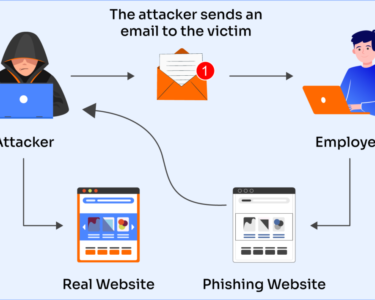Digital Preparedness for Unforeseen Threats
In the age of digital dependence, unforeseen threats loom large, posing significant risks to individuals, businesses, and governments. From devastating cyberattacks to natural disasters that cripple infrastructure, the consequences can be dire. Digital preparedness is paramount to mitigating the impact of such threats and ensuring resilience in the face of adversity. This article explores essential strategies and best practices for bolstering digital preparedness against unforeseen threats.
1. Cybersecurity Fortification
Cyberattacks are a constant threat, and their sophistication and frequency continue to escalate. Robust cybersecurity measures are crucial for protecting critical data and systems. Key steps include:
- Implementing strong passwords: Enforce complex, unique passwords for all accounts. Consider multi-factor authentication for additional security.
- Installing antivirus and antimalware software: Regularly update these programs to detect and mitigate malware threats.
- Patching systems promptly: Software updates patch security vulnerabilities that attackers can exploit. Apply patches as soon as they become available.
- Backing up data: Regularly create backups of important files and store them in multiple secure locations, including off-site cloud storage.
2. Disaster Recovery Planning
Natural disasters and other emergencies can disrupt operations and cause significant data loss. Disaster recovery plans outline specific steps and procedures to mitigate the effects of such events. Key components include:
- Business continuity plan: This plan establishes protocols for maintaining essential operations during and after an emergency.
- Data recovery plan: Outlines procedures for recovering lost or corrupted data, including backup strategies and data restoration processes.
- Communication plan: Establishes channels for communication with employees, customers, and other stakeholders during an emergency.
- Backup and recovery systems: Implement redundant systems and backup power sources to ensure continuity of operations.
- Regular testing and exercises: Conduct periodic drills and simulations to test the effectiveness of recovery plans and identify areas for improvement.
3. Cloud Computing and Hybrid Solutions
Cloud computing offers numerous benefits for enhancing digital preparedness. Hybrid cloud solutions, which combine on-premises and cloud-based infrastructure, provide flexibility, scalability, and redundancy. Key advantages include:
- Data redundancy: Cloud-based data centers replicate data across multiple locations, ensuring availability in the event of hardware failure or a natural disaster.
- Scalability: Cloud services can quickly scale up or down to meet changing demands, ensuring business continuity during emergencies.
- Cost-effectiveness: Hybrid solutions can optimize infrastructure costs by using cloud services for non-critical applications while maintaining essential operations on-premises.
4. Workforce Training and Awareness
Educating employees about digital preparedness and best practices is essential. Training programs should cover topics such as cybersecurity awareness, data backup, and disaster recovery procedures. By empowering employees with knowledge, organizations can reduce the risk of user-induced security breaches and enhance overall preparedness.
5. Government and Industry Collaboration
Effective digital preparedness requires collaboration between governments, businesses, and industry organizations. Joint initiatives can include:
- Cybersecurity threat intelligence sharing: Sharing information about emerging threats and best practices can help organizations stay ahead of potential attacks.
- Public-private partnerships: Government and industry can work together to develop innovative solutions and strategies for enhancing digital resilience.
- Regulatory frameworks: Governments can establish cybersecurity and data protection regulations to promote responsible practices and hold organizations accountable.
Conclusion
Digital preparedness is a proactive strategy for mitigating the impact of unforeseen threats in the digital age. By implementing robust cybersecurity measures, disaster recovery plans, cloud computing solutions, and employee training programs, governments, businesses, and individuals can enhance their resilience and minimize the disruption caused by these evolving risks. Collaboration and information sharing are also crucial for improving preparedness on a broader scale. By embracing these best practices, we can create a more digitally resilient society that is better equipped to weather the storms of unforeseen threats.




